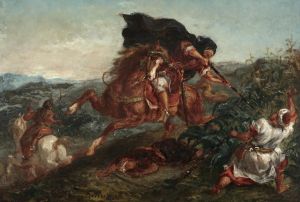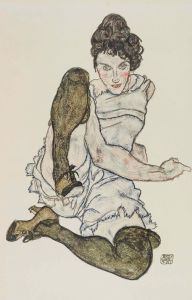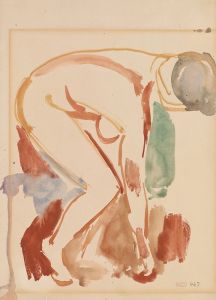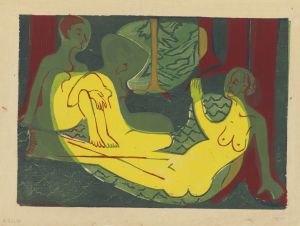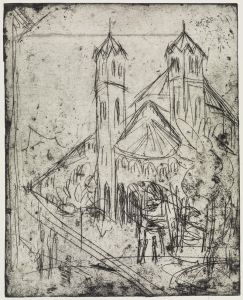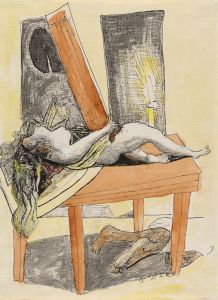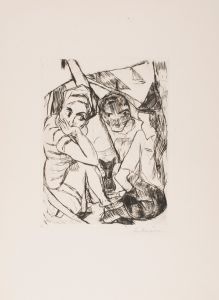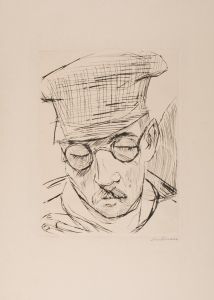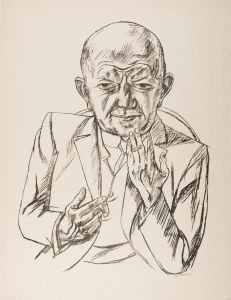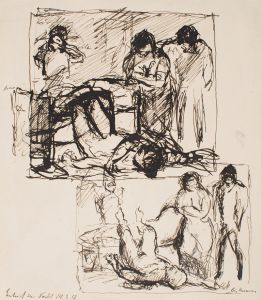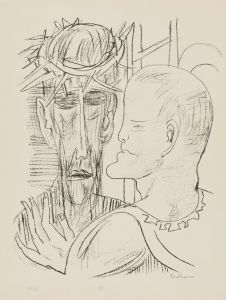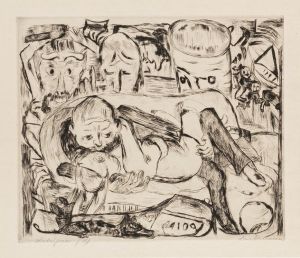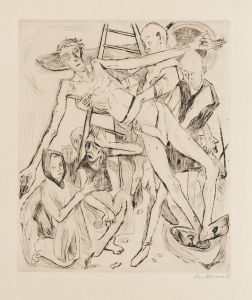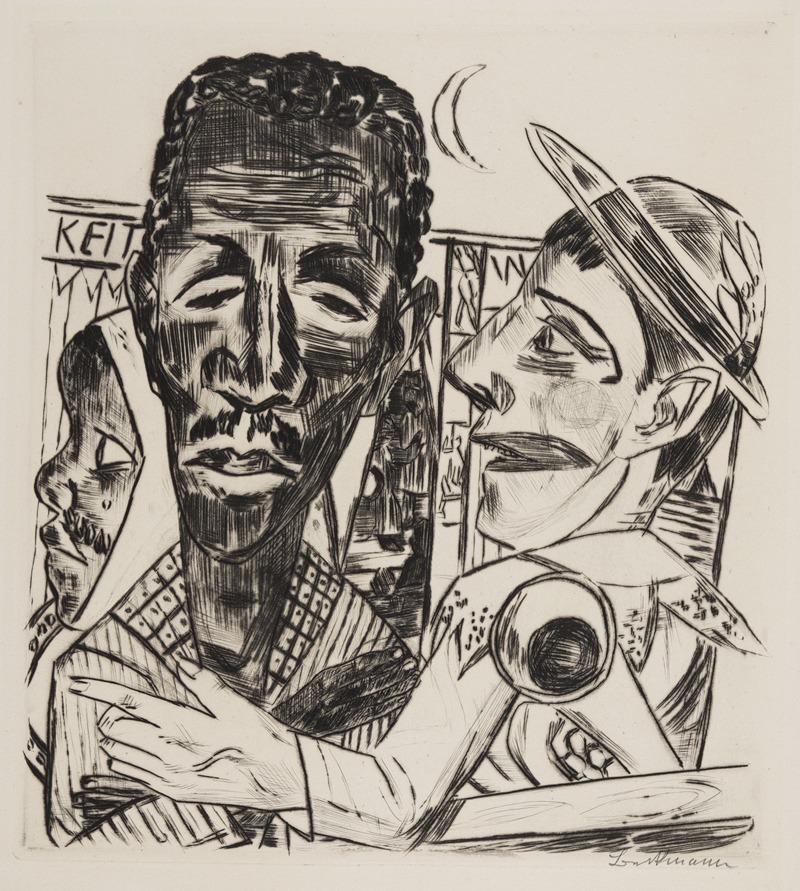
Der Neger
A hand-painted replica of Max Beckmann’s masterpiece Der Neger, meticulously crafted by professional artists to capture the true essence of the original. Each piece is created with museum-quality canvas and rare mineral pigments, carefully painted by experienced artists with delicate brushstrokes and rich, layered colors to perfectly recreate the texture of the original artwork. Unlike machine-printed reproductions, this hand-painted version brings the painting to life, infused with the artist’s emotions and skill in every stroke. Whether for personal collection or home decoration, it instantly elevates the artistic atmosphere of any space.
Max Beckmann was a prominent German painter and printmaker associated with the New Objectivity movement, which emerged in Germany during the 1920s as a reaction against expressionism. Beckmann's work is known for its bold forms, intense colors, and complex compositions, often reflecting the tumultuous socio-political climate of his time.
"Der Neger" is one of Beckmann's paintings, created in 1937. The title, which translates to "The Negro" in English, reflects the terminology of the period, which is now considered outdated and offensive. The painting is part of Beckmann's exploration of identity, society, and the human condition, themes that recur throughout his oeuvre.
Beckmann's work during the 1930s was heavily influenced by the political changes in Germany, particularly the rise of the Nazi regime. In 1933, when the Nazis came to power, Beckmann's art was labeled as "degenerate," and he was dismissed from his teaching position at the Städelschule in Frankfurt. This period marked a significant shift in his career, as he was forced to navigate the oppressive cultural policies of the regime.
"Der Neger" was created during Beckmann's time in exile in Amsterdam, where he fled in 1937 to escape the oppressive environment in Germany. The painting reflects Beckmann's continued engagement with themes of alienation and the human experience. His work often depicted figures in theatrical settings, using symbolism and allegory to convey deeper meanings.
In "Der Neger," Beckmann employs his characteristic style, using bold lines and a vivid color palette to create a striking image. The painting features a central figure, whose identity and role within the composition invite interpretation. Beckmann's use of form and color serves to emphasize the emotional intensity of the subject, a hallmark of his work.
Beckmann's paintings from this period often include elements of social critique, reflecting his views on the political and cultural issues of his time. His work is noted for its complexity and depth, often requiring viewers to engage with the imagery on multiple levels.
Despite the challenges he faced during the Nazi regime, Beckmann continued to produce art that was both personal and universal, exploring themes of identity, power, and the human condition. His work remains influential, and he is regarded as one of the most important artists of the 20th century.
"Der Neger" is an example of Beckmann's ability to convey complex themes through his art, using his distinctive style to challenge viewers and provoke thought. The painting is part of Beckmann's broader body of work, which continues to be studied and appreciated for its artistic and historical significance.





